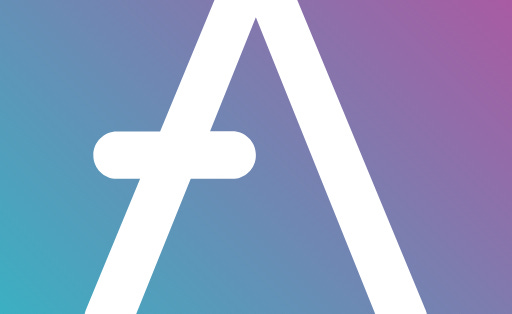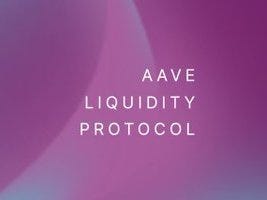Recently, Aave announced the launch of their new stablecoin, GHO. Crypto Twitter and Aave bag holders rejoiced as they took the most obvious strategy move that was available to them at the time. Initially I found the announcement quite exciting given the lack of news in DeFi these days but then upon further inspection there appeared to be more unanswered questions that sprung up from my mind about the whole move.


For the record, I think the Aave team are great executors and have nothing against them. These are just my thoughts about the GHO stablecoin from a strategic perspective.
Alright, let’s get into it.
Stablecoins 101
Over the past few years I’ve started to lose count of all the stablecoins that have come and gone. Each has their own “we’re different” story associated with them. Some have very powerful backers, others have mad scientists cooking up crazy contraptions that few understand and some are pure ponzis where no one knows who the real sucker is. I think they all had a unique spin and gave it their best shot.
However, before we get into what they all got wrong let’s talk about the motivation. Why does everyone want to spawn their own stablecoin?
Because you get the power to print money, literally.
That’s it. Plain and simple. When you can print your own money, the cost of money becomes 0 so your profit opportunities are abundant to say the least. Of course there are rules for when you print but the underlying truth holds, your cost of capital goes to 0.
MakerDAO figured this out about 6 years ago and everyone else has tried to gain the power they have but there’s one thing that they all get wrong and cannot displace MakerDAO on:
DAI has a real use case and is viewed as real money by market participants.
The only reason why they have that property is because they were first and used decentralization as a strong selling pitch. An alternative to the existing USDT at the time (USDC hadn’t launched).
Since then each stablecoin tries to launch and tries to convince the world that their stablecoin is “meant for the masses”, “a true store of wealth”, “the new reserve currency”. The wording doesn’t really matter since no one believes any of it to begin with — and that’s where the problem lies.
Because no one actually believes in what they sell, because there is no reason to — no one can create REAL demand sinks for their stablecoin.
This is the real issue with GHO that is unanswered in my mind. While GHO will be natively integrated into Aave markets and the idea is that Aave’s distribution will bring legitimacy (which I do believe it will), it still doesn’t have any real demand sinks. Aave does not possess any real edge when it comes to people accepting their stablecoin as a store of value. They do have borrowers and lenders that can help bootstrap it but that leads me to the next point…
MakerDAO and Aave
Over the past year, Maker and Aave have had a very cordial, symbiotic relationship. MakerDAO is the central bank that prints the money and Aave/Compound are the commercial banks that create money markets. Maker lends directly to Aave at 3% fixed through its D3 model. Everyone is happy — until now.
Aave, by launching their own stablecoin, is openly telling MakerDAO that they are competing to be the next central bank in crypto and going to use their money market as a leverage point to do so. The wording will sound differently publicly and each side will spin it in it’s own way but we don’t need to look further than 3-6 months in the future to find out answer of how this relationship is going to sour.
Let’s role play.
Aave launched GHO across all its lending markets
When borrowers come to Aave they can now borrow DAI or GHO
In a normal world, they will probably just choose DAI. UNLESS, there is a “discount” or “incentive” offered to borrow GHO instead
Aave markets start decreasing DAI utilisation which means less interest to Maker and less DAI float
GHO grows in market float and cannibalises fees that MKR holders would have earned
This will accelerate until DAI becomes a second class citizen in the Aave ecosystem
MakerDAO realises what is going on and will retaliate by hiking D3 interest rates or launch a competing product
Aave probably knows this and is banking on the fact that MakerDAO will be too slow or unable to launch a successful counter move given their governance woes
Just for clarity’s sake, let’s try taking another angle. Aave actually doesn’t intend on doing the above and is simply willing to allow more ecosystem actors to mint GHO. The core idea of the stablecoin is that any protocol can mint GHO and effectively become a stablecoin reseller.
This however, is no different to what MakerDAO already does with their D3 module and RWA assets.
Here’s a diagram of how the architecture is meant to play out:
Everything I see here is things that either DAI or FRAX do. Aave has no real edge here unfortunately. Because there is no edge, this leads me to the final point…
Stablecoins — A Big CapEx + OpEx Project
At the end of the day, launching a stablecoin is VERY expensive and is an ultra competitive space given the incentive to win. With all of the factors above it really comes down to the fact of how much money is Aave willing to lose in order to pursue this project.
When we factor in:
Governance bloat associated with a stablecoin
On-going liquidity incentives
Increased competition with other DAOs
Upfront cost of development
Continual integrations required
It makes you wonder — what for? Even if Aave dethrones MakerDAO in the next 5 years (very ambitious goal), the end prize isn’t especially great given the fact that USDC dominates and DAI is still a niche product in the broader scheme of things.
I’m not sure what the unit economics of Aave are from a profitability perspective but I don’t think the revenue earned from the Aave protocol exceeds the headcount they’re spending on. That’s maybe okay given the piles of venture money will always flow in this space, but given the choice between pursuing a very expensive stablecoin project versus creating efficiencies in the existing business, I would choose the efficiency path. I could also be wrong and maybe Aave thought that by creating their stablecoin their cost of capital would go to 0 and they can keep all the supply side revenue however that makes the assumption they can cannibalise the USDC borrowing market which is impossible given DAI hasn’t been able to do it and USDC’s float is much, much larger.
Conclusion
I like to make bold, assertive claims but for all I know I could be completely wrong. However, given the information I can gather publicly and my experience having been in DeFi I see GHO as a better stablecoin that doesn’t have a solid edge and will require a lot of resources to maintain and grow. It could be a great move in 5 years from now looking back at this, who knows?
However the biggest thing that would need to be true for that to happen is for Aave to build organic demand sinks that rival MakerDAO at scale.
Excited for where the Aave team takes this and how MakerDAO will eventually respond to the new central bank in town.




Isn't this analysis true of all DeFi stablecoins? None of em have any real entrenched demand and it's questionable if the costs are worth it...but that also leads to the market still being wide open, so why not try and take it?